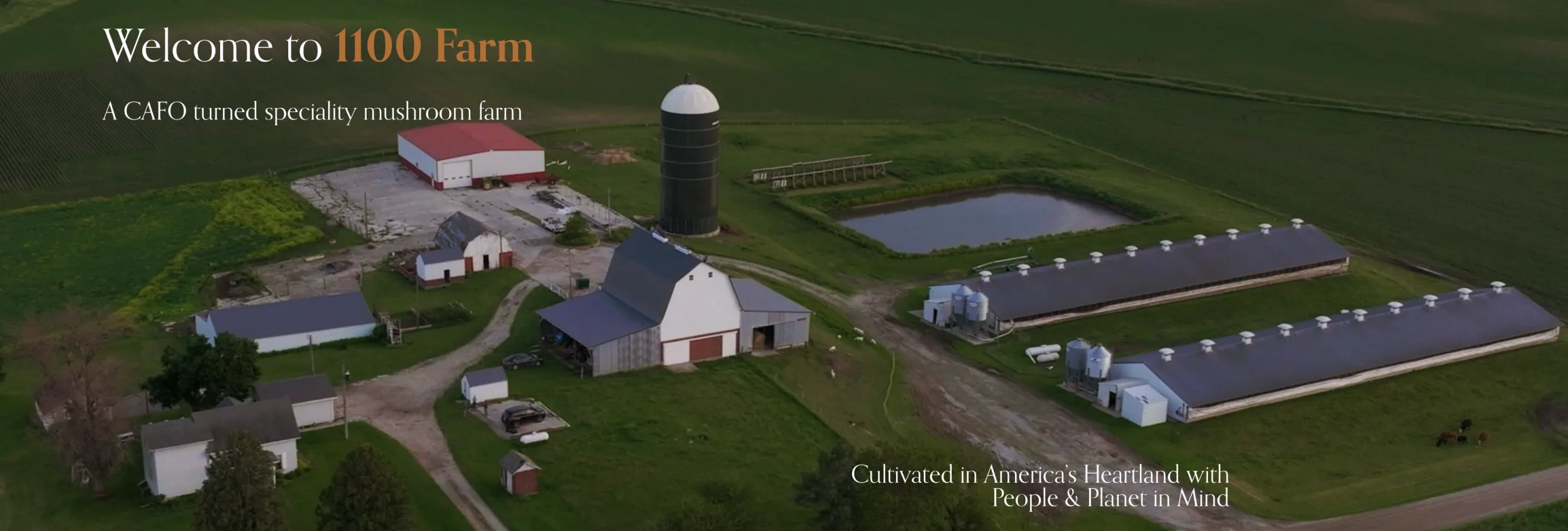August 22, 2024
Iowa family of farmers is working to create a midwestern 'blueprint;' they've swapped out pigs for mushrooms

The Faaborg family is working to build a farming blueprint for the Midwest. (1100 Farm photo)
The Faaborg family made the bulk of their living from running a concentrated animal feeding operation, or CAFO, for hogs on the family's Iowa farm. While the undertaking was profitable, over time it left owners Rand and Tammy wanting to leave industrial farming, but the couple was unsure how they could make their farm's ends meet without pigs," reports Cara Buckley of The New York Times. "But this summer, with help from a nonprofit group and a leap of faith. . . . The Faaborgs have traded hogs for mushrooms in an effort to restore balance to the land, and their lives."
But Rand and Tammy aren't the ones leading the charge to change the family farm's product portfolio -- their second son, Tanner, is too. "He hopes to make his family’s farm a blueprint in the Midwest, to show how people can leave industrial farming, grow environmentally friendly and profitable food, and, in turn, help rebuild hollowed-out communities," Buckley writes. 'I want to make rural America a place where people want to live and grow up in,' Tanner Faaborg said. Absent significant changes, he said, the heartland will end up becoming one big manufacturing plant.'"
The switch to mushrooms was one idea the Transfarmation Project shared with Tanner. "The initiative is run by the farm-animal welfare charity Mercy for Animals that helps people transition out of industrial animal agriculture and into growing specialty crops," Buckley explains. "Tanner Faaborg seized on mushrooms, intrigued by their potential to heal ailments and serve as a superfood."
It took time for Tanner to convince his parents and his older brother, Tyler, to commit to leaving the CAFO behind. The Transfarmation Project helped him make the case. Buckley reports, "Tyler Whitley, the director of the Transfarmation Project, describes himself as a 'farmer social worker.' His group talks to farmers, learn about their equipment and buildings and whether it’s tied to debt, explores what plant-based alternatives might work, and matches them with resources."
To get started, the Faaborgs received a $15,000 grant from the Transfarmation Project for "a pilot project cultivating reishi, lion’s mane and oyster mushrooms," Buckley writes, "It provided another $200,000 toward redesigning one of the Faaborgs’ hog barns. . . The last of their hogs shipped out in the fall of 2022. Mushrooms for medicinal tinctures and a coffee blend are now being grown in an outbuilding, and a hog barn [will] grow specialty mushrooms. Elsewhere on the land, hundreds of native trees have been planted and a pollinator-friendly field has been sown."
The Faaborg homestead now produces mushrooms "under the name 1100 Farm, a nod to the number of hogs each barn once held," Buckley reports. "If all goes well, the profits from mushrooms could exceed what the farm was generating from hogs during the best of times, without the backbreaking work and sounds and smells from the hog barns and waste pit."